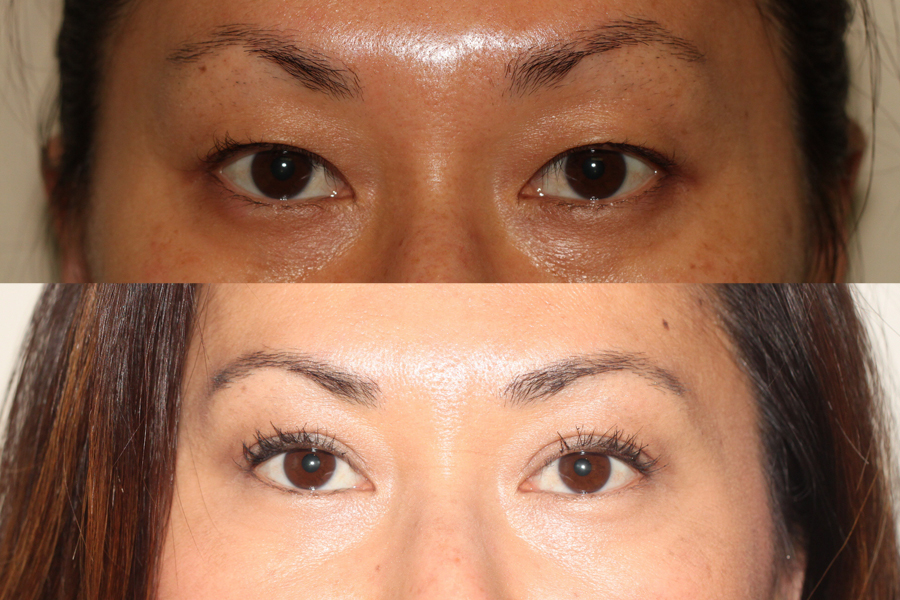Asian Blepharoplasty or Double Eyelid Surgery is different from that performed on Caucasian patients in three important ways. The Asian eyelid is characterized by a poorly defined or absent crease, an excess of fat, and an epicanthal fold (the skin that covers the inner corner of the eye) of varying size and configuration.
Dr. Denton believes that the goals of Asian blepharoplasty should be to create a natural-appearing upper lid crease that complements and is in balance with the other facial features. In order to achieve this, it may be necessary to remove excess fat and to make changes to the epicanthal fold.

Asian Blepharoplasty Techniques
Two Asian plastic surgery techniques are used to create the eyelid crease during blepharoplasty, each with its own advantages and disadvantages. The “suture method” limits the size of the incision but may be less permanent than the “incisional method” during which excess skin is also removed at the same time as the crease is being created or changed.
The Suture Technique
The suture method is also referred to as the ‘Pinch method’. This non-incision method uses fine sutures without making incisions to the eyelid. However, the suture method does not address excess fat or the epicanthal fold, both of which require skin incisions and as a result, the crease created by the surgery is more likely to disappear over time.
This method is recommended to those who do not have eyelids that are excessively thick or droopy and want fast results. The suture method is also preferred by individuals who want a less invasive procedure with little to no scarring and swelling.
The Incision Technique
This technique involves making an incision, or a set of small incisions, to perform upper eyelid surgery. Naturally, this technique is more invasive than the suture technique. Consequently, patients should expect a longer recovery period. Patients can resume their normal activities within 5 to 7 days and can expect any signs of surgery to disappear in about 10 days.
The main advantage of this procedure, though, is that the results are more predictable and longer-lasting than the suture technique.
Why You May Consider Having an Asian Blepharoplasty?
Dr. Denton’s qualifications, experience, and skills can help create a more defined crease while maintaining your ethnic identity. This procedure can reduce eyelid puffiness as well as skin wrinkles around the eye area. Most importantly, though, most Asians choose to have this procedure because it can make their eyes look livelier and bigger with a natural-looking crease in the area above the eyelashes.

Choosing The Appropriate Facial Plastic Surgeon
When considering Asian Blepharoplasty, you should consult a leading board-certified Facial Plastic Surgeon, like Dr. Denton, who is highly experienced with the Asian facial anatomy and the surgical techniques required to perform it successfully in order to provide you with the desired results.
Your facial plastic surgeon should take the time to consult with you and establish a customized treatment plan. Computer imaging can also be used to reflect the anticipated changes. Dr. Denton’s philosophy is that the patient must be an equal member of the decision-making team so that he or she can make sound informed decisions and will be aware of the expected result.
To learn more about Asian Blepharoplasty and whether it is right for you, schedule your consultation here today. Dr. Denton can help you achieve the result that will make you feel more confident about your appearance.
